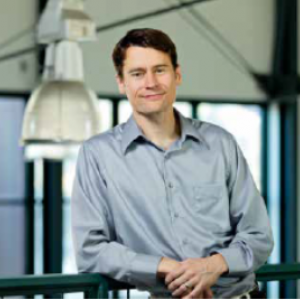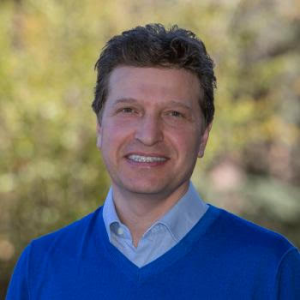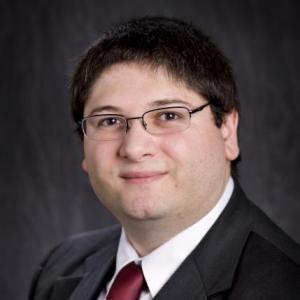Seminars
Upcoming Seminars
Stay tune!
Past Seminars

The NHERI TallWood Project Shake Table Test of Mass Timber Building
October 26, 2022 - 12:00 pm
Speaker: Keri L. Ryan
To advance the wood products market, new design solutions for tall wood buildings using mass timber products are being developed. In particular, post-tensioned rocking walls built with cross-laminated timber (CLT) or other mass timber products have been proposed as a seismic resilient lateral system. To advance the seismically resilient mass timber solutions for tall buildings, a comprehensive shake table test program of a 10-story building with mass timber rocking walls is underway.

A Journey Towards Testing A Full-Scale 10-Story Wood Building
October 24, 2022 - 12:00 pm
Speaker: Shiling Pei, PhD. P.E.
Wood has thousands of years of history as a building material but has also been restricted by building codes and regulations following the industrial revolution. Wood building is viewed as a cost-effective, but less engineered system mainly for low-rise options. Mass timber construction is a relatively new way of utilizing wood material for modern, high performance buildings at both large and small scales. It gives rise to the currently trending conception of wooden sky-scrapers.

Active Architected Matter with Embedded Intelligence
October 19, 2022 - 12:00 pm
Speaker: Amir H. Alavi
There is an unceasing quest to create novel forms of intelligent active matter that exhibits sensing, energy harvesting, actuating, computing, and communication functionalities. Realizing such capabilities can provide new road maps to autonomous and electronic materials with numerous applications in robotics, human-machine interfacing, micro/nano-electromechanical systems, and flexible electronics.

Analysis, Visualization, and Design
October 12, 2022 - 12:00 pm
Speaker: Mike Korolyk
In nonlinear response history analysis, each project is a new adventure.
To begin with, each building is different: different material type, different architecture, different configuration, different topography. On top of that, seismic demands vary from one site to another and from one Code cycle to another.
Armed with our past experience, we build a complicated model, attempting to make the right choices with regard to granularity and elemental inputs.

Neural Networks in Scientific Computing
April 20, 2022 - 12:00 pm
Speaker: Daniel M. Tartakovsky
Neural networks (NNs) have become ubiquitous in scientific computing, including qualitative predictions of subsurface phenomena. Yet, the question of what they are good for remains unresolved. We discuss several where NNs might offer advantages over the existing alternatives. One is the use of NNs as surrogates or emulators of partial differential equations (PDEs) that describe the dynamics of complex systems. A virtually negligible computational cost of such surrogates renders them an attractive tool for ensemble-based computation, which requires a large number of repeated PDE solves.

Data-driven Solid Mechanics for Big and Small Data
April 13, 2022 - 12:00 pm
Speaker: Steve WaiChing Sun
We present an adaptive hybridized model-based/model-free strategy that ensures the feasibility of multi-physics simulations when different amounts of data are available. In the data-rich situation, we extend the data-driven approach where the hydraulic and solid constitutive laws may switch from model-free to mode-based depending on the availability of data. Techniques related to identifying the constitutive manifold, the influence of the normed space, and the distance-minimized algorithm accelerated by the K-dimensional tree search will be discussed.

Non-Invasive Subsurface Site Characterization for Seismic Ground Response Analyses
April 11, 2022 - 12:00 pm
Speaker: Professor Brady R. Cox, Ph.D., P.E.
Numerical earthquake wave propagation simulations, known as ground response analyses (GRAs), are commonly performed in an attempt to estimate the site-specific, frequency-dependent amplification of seismic waves (i.e., site effects) as they travel from a reference bedrock condition up through soil layers to the ground surface. The importance of accurately predicting site effects for engineering infrastructure projects in seismically active regions cannot be overstated.
6
Application of Particulate Models to Problems in Energy Geotechnics
Speaker: T. Matthew Evans
A diverse array of (broadly defined) energy applications is an increasingly large part of the geotechnical engineer’s portfolio, both in research and practice.
9
“Understanding the Use of Bentonite as a Buffer Material for the Geological Disposal of High-Level Radioactive Waste: Experiments and Numerical Modeling
Speaker: LianGe Zheng
Disposal of high-level radioactive waste in geologic repositories involves a multi-barrier system that comprises of an engineered barrier system (EBS) and the host rock (or natural barrier system). One of the common components of the EBS is a bentonite buffer material which has several beneficial features such as a low permeability as well as a high swelling and retardation capacity. Bentonite is a very complex geo-material: it is composed of swelling clay minerals (i.e.

FRP-Confined RC Columns with Transverse Steel Confinement: From Finite Element Modeling to Reliability-Based Calibration of Design Equations
March 02, 2022 - 12:00 pm
Speaker: Michele Barbato, Ph.D
External confinement of reinforced concrete (RC) columns with fiber-reinforced polymer (FRP) wraps is a technique extensively used for strengthening and retrofit of structurally deficient columns. Due to modern design codes’ requirements, new RC columns tend to have higher amounts of both longitudinal and transverse steel when compared to older columns.
